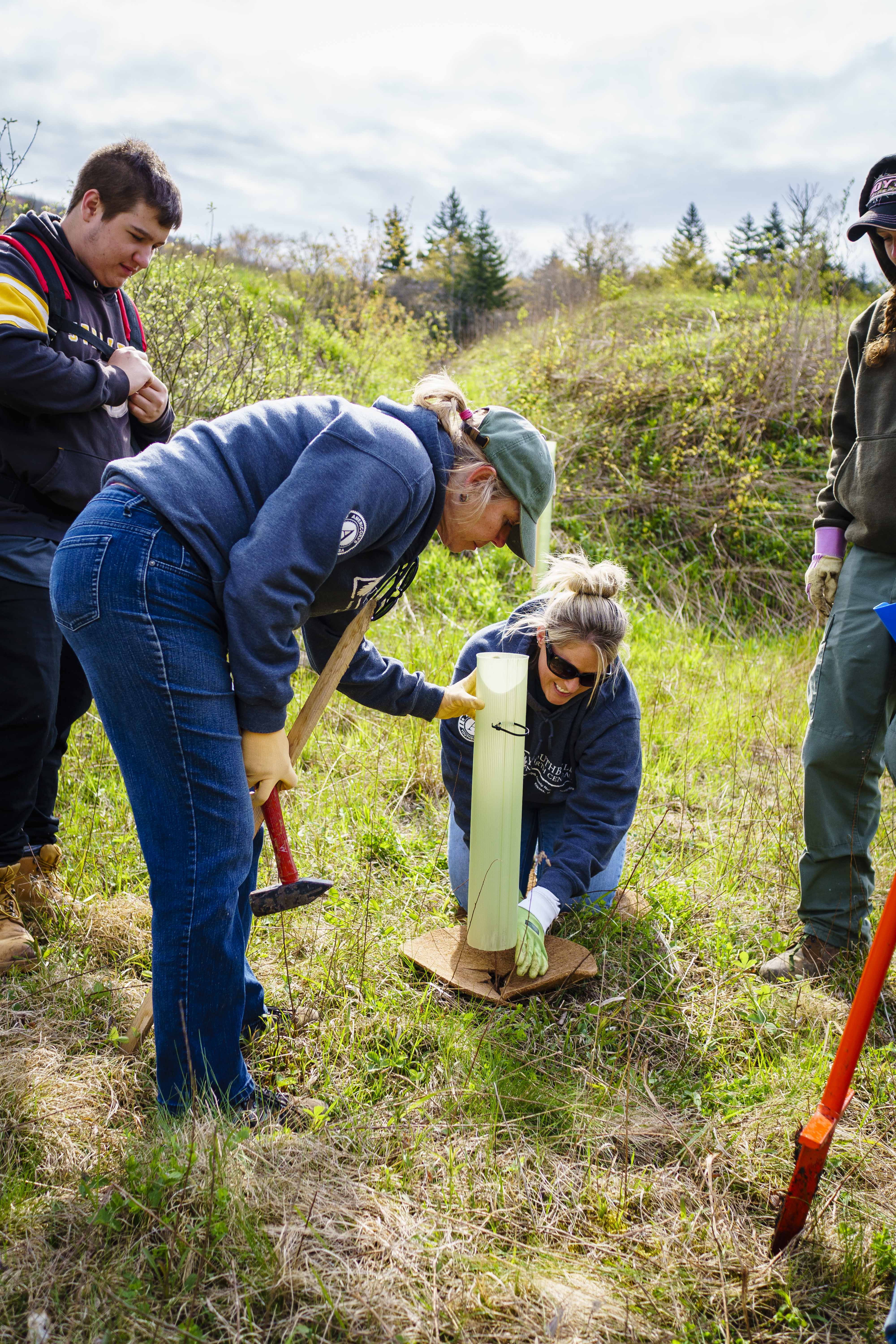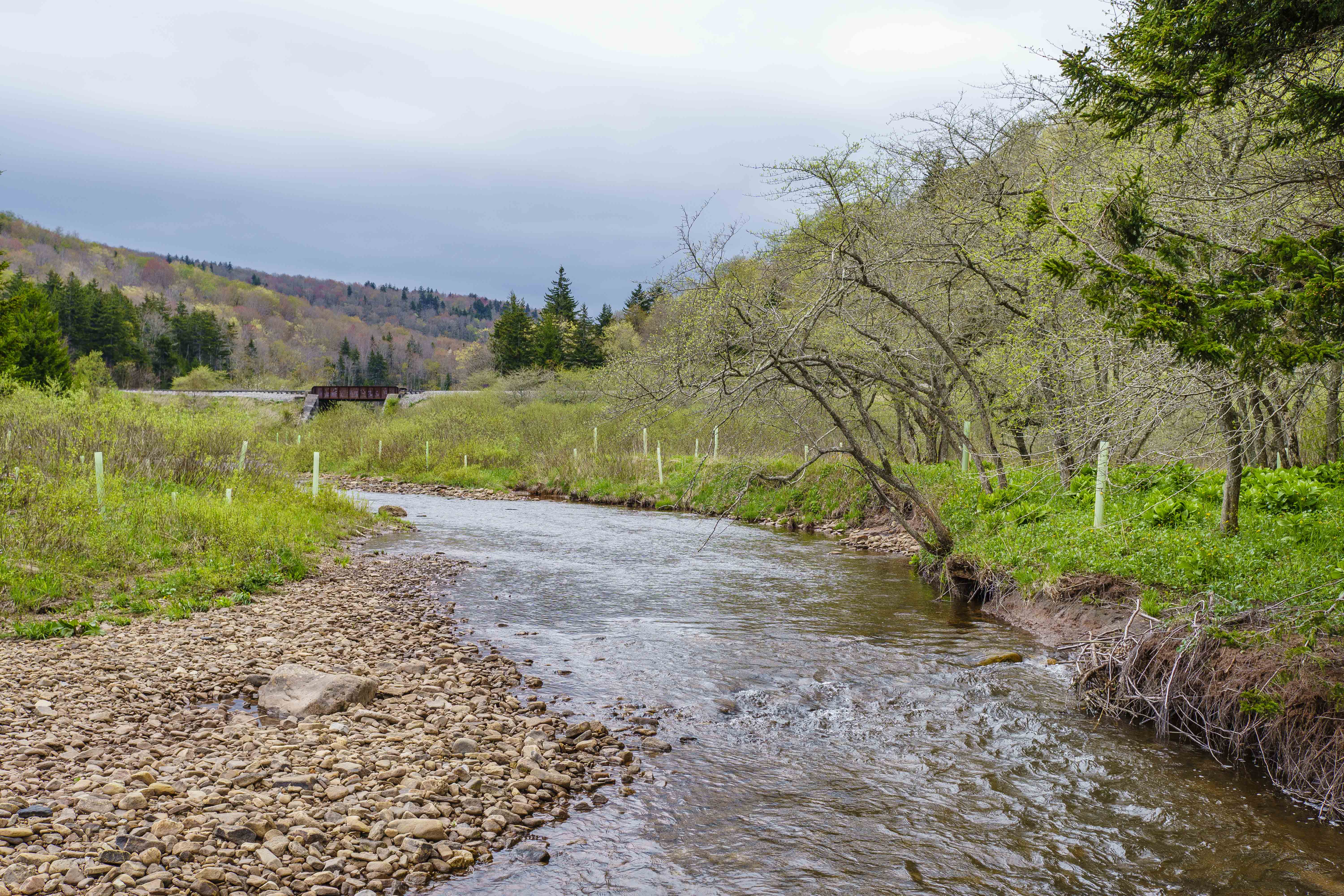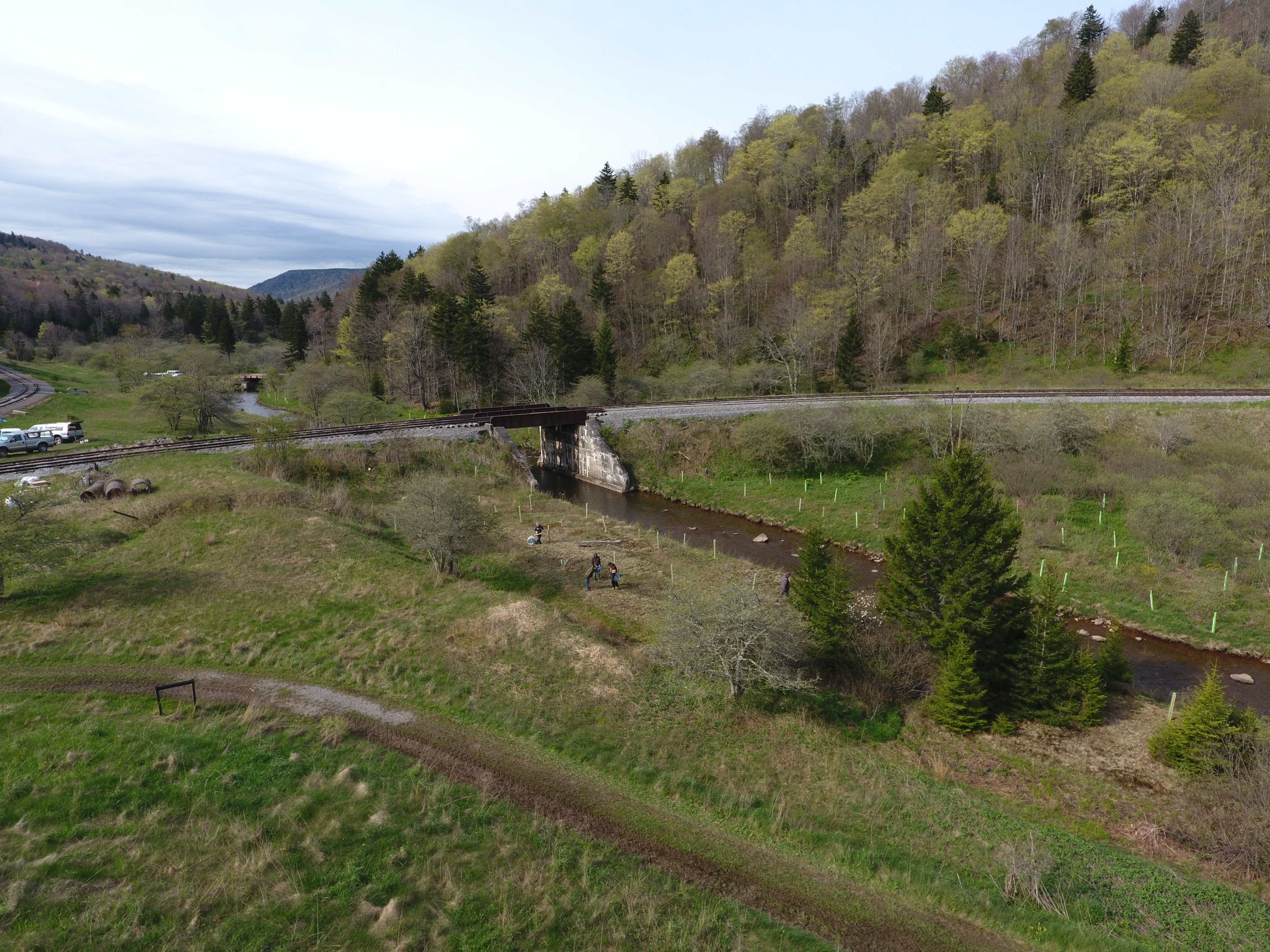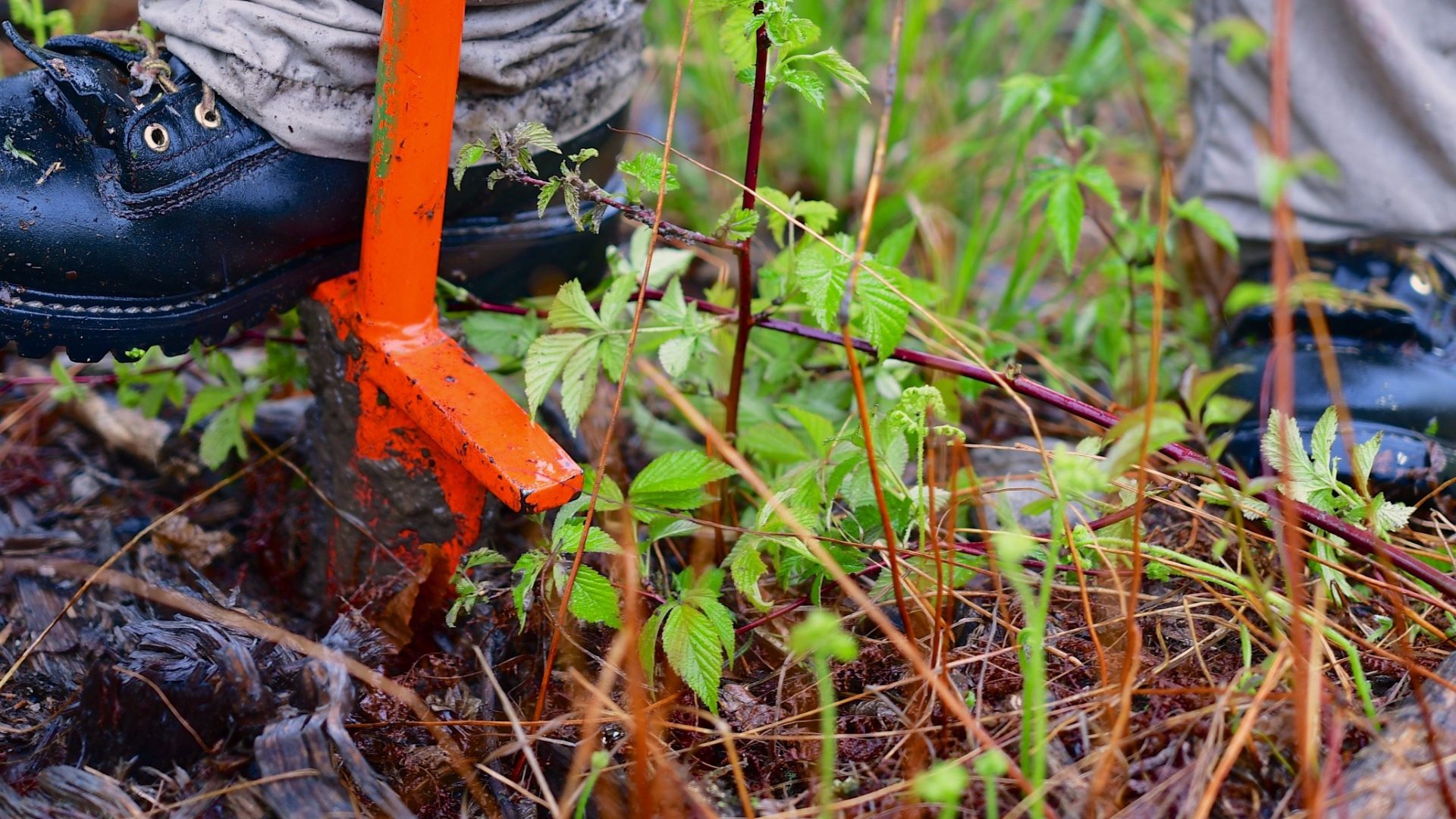The West Virginia Division of Natural Resources planted more than 2,500 trees and shrubs along the banks of Shavers Fork and its tributaries earlier this month in an effort to improve soil quality, increase shading and reinforce stream banks in the area.
The following field report and photos were provided by David Thorne, an aquatic habitat biologist for DNR.

North Central Youthbuild Coordinator Michelle Phares and crea install a tree tube.
From May 1 – May 7, the WVDNR Aquatic Habitat Program partnered with the WVU Natural Resources Analysis Center and North Central Youthbuild in Elkins to plant more than 2,500 native trees and shrubs along the banks of Shavers Fork and its tributaries.
Approximately 12 acres along about a 3/4 mile of Shavers Fork and 1/2mile of tributaries were planted with trees and tree protector tubes. Our objectives were to:
- Increase vertical tree structure for shading to help cool the water,
- Provide a long-term source of woody material to the stream channel and banks for increased habitat complexity,
- Add some stability to stream banks to help reduce erosion, and
- Provide a source of organic material (leaf fall) and nutrients to the soils in and around the historic logging town of Spruce.

DNR planted more than 2,500 trees and shrubs along Shavers Fork and its tributaries in May.
We mostly planted hardy and tolerant pioneer species of Quaking Aspen and Bigtooth Aspen, plus a couple of varieties of very fast-growing hybrid poplars. The hybrid poplars were chosen because of their ability to grow anywhere, grow fast and produce a lot of leaf litter over their life. They also die relatively young, at around 30-years-old when they are as tall as 80 or more feet and up to 30 inches in diameter. Hopefully some of the deadfall will make its way into the river to provide much-needed cover for native Brook Trout and other fish, and provide additional nutrients for other aquatic life.
Speckled Alder and Silky Dogwood also were planted. We targeted areas where these species seemed to be slower to colonize. We also planted a lot of “livestakes,” essentially sticks of easily rooted shrubs and trees jammed into the edge of the stream near the water’s edge. These will root quickly to stabilize banks and provide some immediate stream side cover. Among the livestake species was Black Willow, which will provide some vertical tree cover over time, Silky Willow and Common Elderberry. Additional species planted a little farther from the stream’s edge include, Yellow Birch, Red Maple, and Allegheny Serviceberry. These trees will provide additional riparian cover and future vegetative succession.
We added dolomitic lime to the soil to help boost the very poor pH, Calcium and Magnesium values. Fertilizer, both short- and long-acting types, also was added near each tree to improve Nitrogen, Phosphorus and Potassium to improve the tree’s chances of surviving.
Hopefully, we can see some of the results of this effort over the next 20 or 30 years. And won’t those 700 aspen trees look beautiful mixed in with the Red Spruce in the fall?

An image captured by a drone camera, showing DNR’s work along Shavers Fork.




